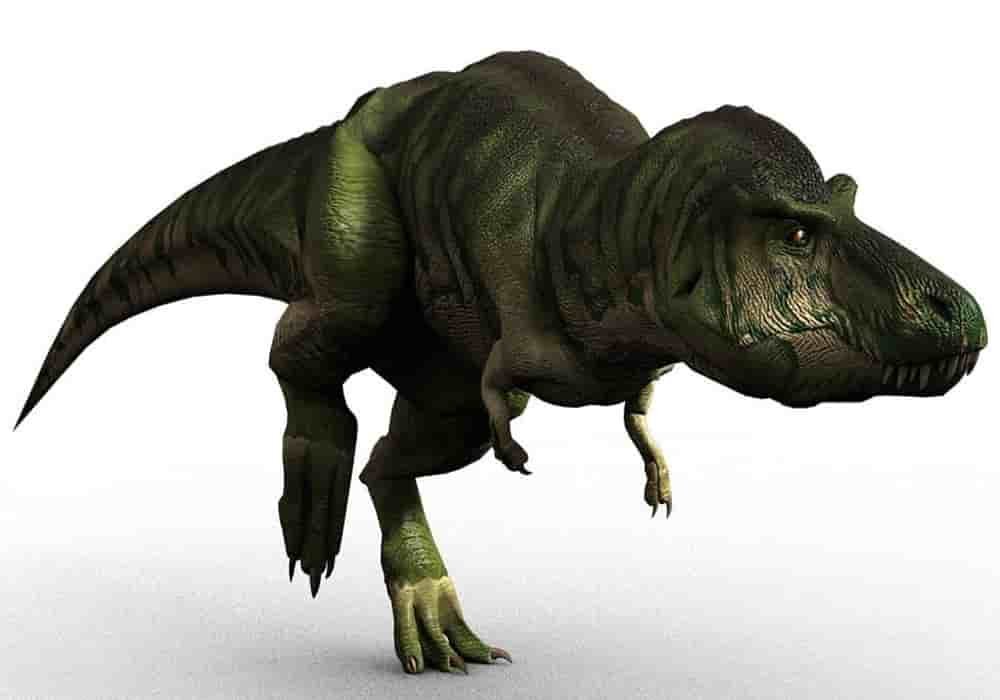The Dinosaurs | Fascinating World of Dinosaur Names and Pictures
Dinosaurs are a group of reptiles with a set of physical features that differ from all other reptiles. Welcome to an exciting journey through time as we delve into the captivating realm of Types of Dinosaurs. Dinosaurs first appeared during the Triassic period, between 243 and 233.23 million years ago, although the exact origin and evolutionary time of dinosaur species is an active subject of research.
The Triassic is a period on the geological time scale lasting from 251 ± 0.4 to 199.6 ± 0.6 million years ago. This period took place after the Permian and was followed by the Jurassic.
In what era did the dinosaurs live?
Mesozoic Era.
Dinosaurs lived between 230 and 65 million years ago, during what is known as the Mesozoic Era. This was millions of years before the first modern humans, Homo sapiens, appeared. Scientists divide the Mesozoic Era into 3 periods: Triassic, Jurassic and Cretaceous.
List of types of dinosaurs
The list of types of dinosaurs is incredibly diverse and fascinating. It includes iconic species like the mighty Tyrannosaurus rex, the horned and armored Triceratops, the swift and intelligent Velociraptor, the long-necked and herbivorous Brachiosaurus, the heavily armored and club-tailed Ankylosaurus, and the flying Pteranodon. These are just a few examples of the incredible variety of dinosaur species that inhabited the Earth during the Mesozoic Era, captivating our imaginations and providing valuable insights into our planet’s ancient history. Discover the fascinating world of dinosaurs and explore the diverse types of these ancient creatures.
Abelisaurus
The carnivorous Abelisaurus had long, slender hind legs that may have reached about 7.4 meters in length, although this is uncertain as it is known from only a partial skull. The arms are rather short, the head is long and narrow without horns or crown with deep set eyes. Abelisaurus began in the Late Cretaceous in what is now South America.
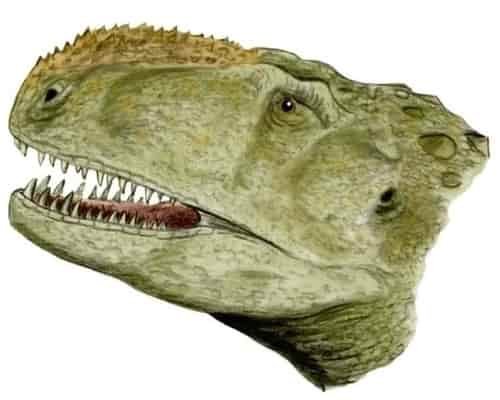
Albertosaurus
Is one of the T-rex family. Reaching 7.6 meters (25 ft) long and weighing 2 tons (4000 pounds), and lived in the Cretaceous period in North America. And it is possible that Albertosaurus was a scavenger. Its running speed is estimated to be able to reach 48 km/hour (30 mph), this speed is the fastest speed among its body size.

Allosaurus
Allosaurus was one of the largest predators of the Jurassic Age. It would reach a length of around 12 meters and weigh between 2 and 5 tons.
Allosaurus preyed on dinosaurs such as Stegosaurus, and may even have hunted large Jurassic sauropods such as Diplodocus and Apatosaurus.
In Greek: Allos; different,’odd’, and Sauros; lizard. Allosaurus was the largest carnivorous dinosaur in the Jurassic Period. Allosaurus is one of the best known types of dinosaurs so far besides other earlier carnivores such as Megalosaurus and Tyrannosaurus rex.

Ankylosaurus
Ankylosaurus was a member of a group of dinosaurs called Ankylosauria. Their name means ‘fused together lizard’ in the name of their combined plate armor.
The Ankylosaurians are members of a larger group of dinosaur types called “armored dinosaurs”.
Ankylosaurus was about 10 meters long and weighed about 5 tons. It had a bone at the end of its tail like a strong spiny ball, which would have been an effective weapon against predators.
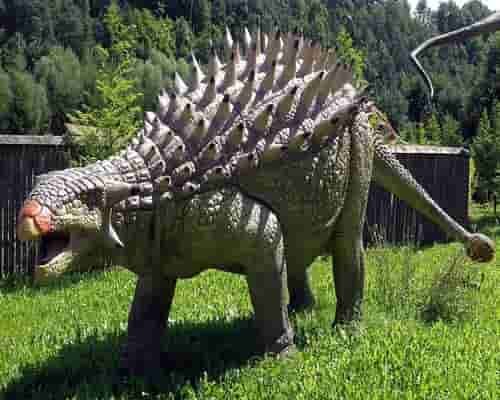
Apatosaurus atau Brontosaurus
Apatosaurus was a large sauropod dinosaur. It lived in the Late Jurassic Period. It weighs between 20 and 30 metric tons and is about 20 to 23 meters long.
Apatosaurus achieved colossal sizes by eating plants instead of meat. It may use its long tail as a whip to protect itself from predators.
Apatosaurus or often called Brontosaurus (meaning “lightning lizard” from the Greek brontē/βροντη meaning ‘lightning’ and sauros/σαυρος meaning ‘lizard’), is a genus of sauropod dinosaur that is no longer used.
The species Brontosaurus excelsus was named by its discoverer, Othniel Charles Marsh, in 1879 and this name remained in official literature until about 1974, although it was recognized as a species of the previously named genus, Apatosaurus, in 1903. has a very long neck and includes herbivorous dinosaurs, their body length can reach 26 meters with a weight of 32 tons, this weight can exceed 6 elephants. Estimated to live in the Jurassic period. Has a long tail as a deadly whip. Besides that, the main enemy is a large carnivore like Allosaurus. Its habitat is usually on the shores of lakes and forests. However, after a few years the name Brontosaurus was changed back to Apatosaurus.
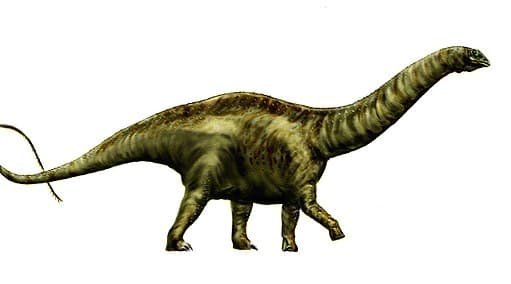
Archaeopteryx
Is the earliest and most primitive type of bird known. This animal lived in the Jurassic Period around 155–150 million years ago in what is now southern Germany.
Imagine a cross between a small dinosaur and a bird, and you might have a pretty good idea of what Archeopteryx was like. Its mouth was filled with teeth and tailbone of a dinosaur, with feathery bird wings.
Many scientists now consider birds to be a type of dinosaur. Archeopteryx lived in the Late Jurassic Period.
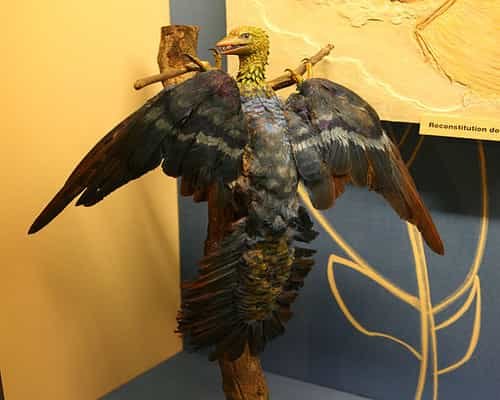
Baryonyx
Baryonyx was a type of bipedal fish-eating dinosaur that lived in the Early Cretaceous era.
In 1983, amateur fossil collector William J. Walker came across a strange fossil. He alerted the Natural History Museum in London, who realized he had made an important discovery.
After further excavations, paleontologists discovered about three-quarters of the new dinosaurs. It was named Baryonyx walker, in honor of its discoverer.

Brachiosaurus
This giant sauropod grew up to 25 meters in length and weighed between 30 and 50 metric tons. It was one of the largest land animals that ever existed. The name Brachiosaurus means ‘blade lizard’, due to the frontal lines of its arms joining its shoulders.
Unlike other sauropods, Brachiosaurus’ forelegs were longer than its hind legs.
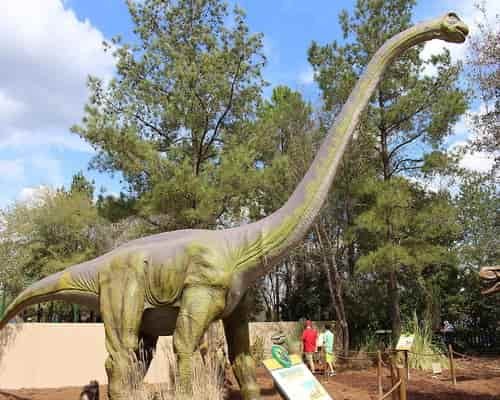
Carnotaurus
Carnotaurus was a large, fast-moving predator on two legs. It is about 9 meters long, and weighs about 1.35 tonnes.
This typical meat eater has two horns on its head. Its name means ‘flesh-eating ox’ in the name of this horn.
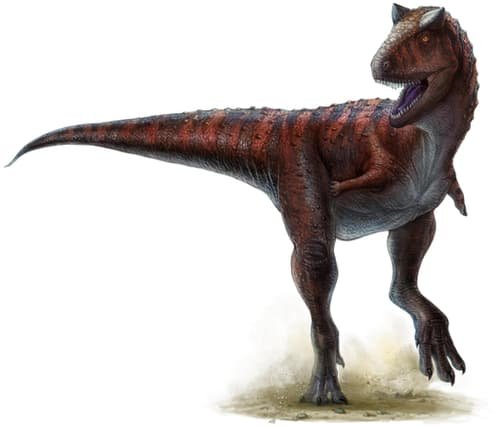
Coelophysis
Coelophysis is one of the earliest known dinosaurs. It lived in the Late Triassic Period. Despite their enormous age, many Coelophysis fossils have been found.
Coelophysis was a small, light, agile and fast dinosaur. These meat-eating reptiles will eat animals such as small reptiles and insects.
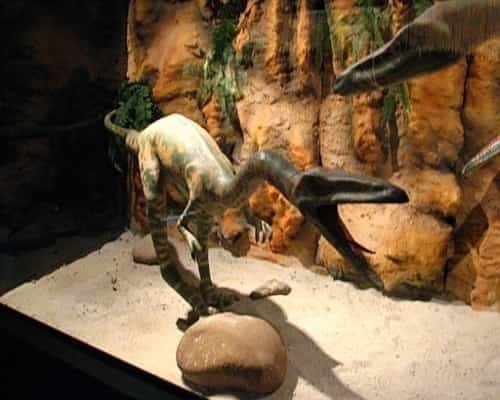
Deinonychus
This early Cretaceous dinosaur grew to about 3 meters in length and weighed about 80 kg. Its name, which means ‘terrible claws’ refers to the deadly claws found on each of its feet.
Although small compared to other dinosaurs, Deinonychus was built for speed, and would have been an effective predator. It also has long forelimbs and strong hand claws.
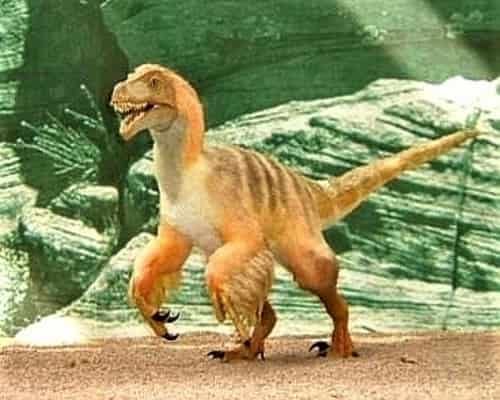
Diplodocus
Diplodocus, like all other sauropods, was a giant, quadrupedal dinosaur with a long neck and tail. It may use its long tail like a whip for protection against predators.
Diplodocus was about 25 meters long, about 5 meters high and weighed between 10 and 26 tons. It lived in North America during the Late Jurassic Period. Diplodocus is named after the Greek and Latin meaning “Two-masted” because of its strong leg bones and joints.
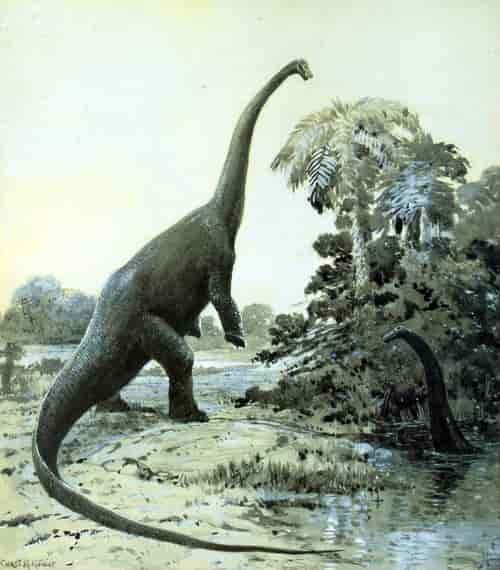


Edmontosaurus
Edmontosaurus was a large herbivorous dinosaur. It was a member of the ‘duckling’ group of dinosaurs, named after their duck mouths. Edmontosaurus herders roamed western North America in the Late Cretaceous.
Edmontosaurus would have walked on two longer hind legs for most of the time. When it has to descend to reach food near the ground, it will walk on all fours.
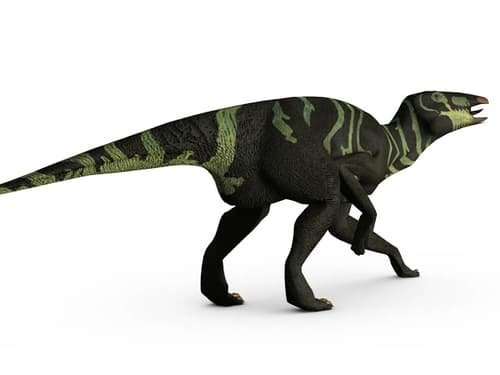
Giganotosaurus
Giganotosaurus means “southern giant lizard”. This predator walked on two legs and was even bigger than a Tyrannosaurus. It is about 16 meters long and weighs 8 tons.
It probably has a good sense of sight and smell. Giganotosaurus was discovered in South America during the Late Cretaceous.
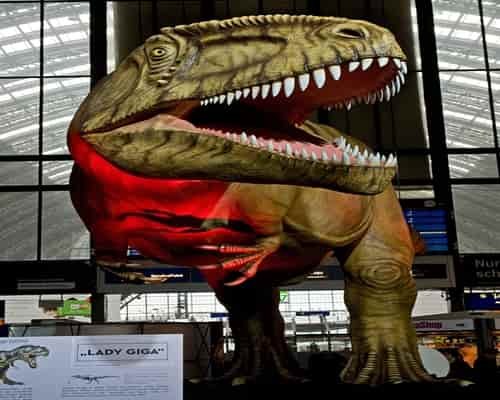
Gojirasaurus
Gojirasaurus (meaning “Godzilla Lizard”) is a possibly dubious genus of dinosaur named after the giant monster film character Gojira (the Japanese name for Godzilla). Gojirasaurus is one of the largest carnivorous dinosaurs known from the Triassic Period, nearly the size of its relative, the large coelophysoid Dilophosaurus.
The size of the tibia is 469 mm, which is comparable to Liliensternus (409 mm) and Dilophosaurus (555 mm), indicating that it was a large triassic dinosaur, estimated at around 5.5 meters, which can be extrapolated to a weight of around 150–200 kg.

Asteroid | Origin, Explanation, Types and Examples | Are we threatened?
Gorgosaurus
Gorgosaurus was a close relative of Tyrannosaurus, being in the same family, Tyrannosauridae. Gorgosaurus lived in the Late Cretaceous and was found in America and Canada.
With a massive skull and jaws full of sharp teeth, Gorgosaurus certainly lived up to its name, which means ‘terrible lizard’.
Gorgosaurus is a genus of theropod dinosaur that lived during the Late Cretaceous period, approximately 76-75 million years ago. It belonged to the Tyrannosauridae family and was closely related to the famous Tyrannosaurus rex. Gorgosaurus was a large carnivorous dinosaur, measuring about 8-9 meters (26-30 feet) in length and weighing around 2-3 tons. It had a robust build, a large head with sharp teeth, and powerful jaws. With its strong legs and tail, Gorgosaurus was a swift and agile predator, likely preying on herbivorous dinosaurs of its time.
Fossil discoveries of Gorgosaurus have been made in North America, specifically in present-day Alberta, Canada, and Montana, United States. Studying Gorgosaurus fossils has provided valuable insights into the biology and behavior of tyrannosaurid dinosaurs.
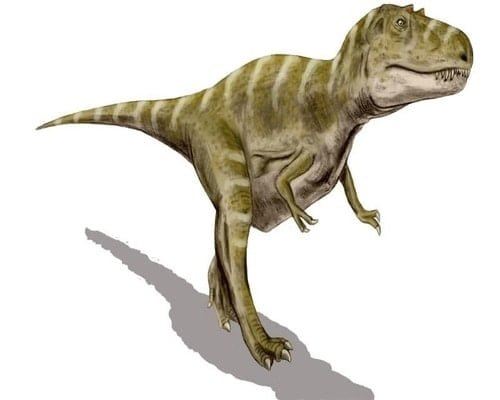
Ichthyosaurus
Ichthyosaurs were certainly ovoviviparous. Ovoviviparous are animals that lay eggs and deposit them in a pocket located on the stomach of one of the parents. This pouch is called the genital pouch.
Ichthyosaurs are fossilized large reptiles from the -250 to -90 Ma secondary era, or Mesozoic era, resembling carnivorous dolphins that ate fish and adapted to marine life. Ichthyosaurs could reach ten meters in length.
Ichthyosaurs were marine animals, very well adapted to the aquatic environment. Their general appearance was that of today’s dolphins (Odontoceti cetaceans), but the rear end of the body formed fins arranged in a vertical plane, like fish, and not in a horizontal plane, like cetaceans.
Ichthyosaurus had good speed underwater and could even fight Spinosaurus (spinosaur). It primarily feeds on fish such as coelacanths.
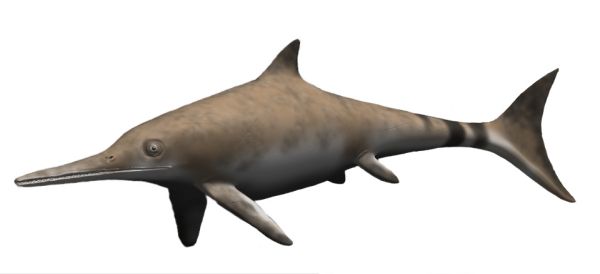
Restorasi Ichthyosaurus communis, Jurassic Awal Inggris. Nobu Tamura (http://spinops.blogspot.com), CC BY 3.0, via Wikimedia Commons
Although superficially similar in form and exploiting the same environmental niches, ichthyosaurs were reptiles and therefore neither dolphins (marine mammals) nor sharks (fish).
Ichthyosaurs were not dinosaurs, but represented a distinct group of marine vertebrates. Because ichthyosaurs were so specialized and modified for life in the sea, it is not clear which group of vertebrates were their closest relatives.
Ichthyosaurs were driven to extinction by intense climate change and their own inability to evolve fast enough.
The name is borrowed from the scientific Latin ichthyosaur, with the same meaning, consisting of the Greek ikhthus, “fish”, and sauros, “lizard”.
Iguanodon
Iguanodon is the second dinosaur to ever be named. The first Iguanodon fossils are teeth. Discovered in England by the wife of physician and geologist Dr Gideon Mantell. Mantell named the specimen Iguanodon, because the teeth resemble those of an iguana.
Iguanodon was a large plant-eating dinosaur, able to walk on both two and four legs. It lived in the Early Cretaceous Age. It had spiny thumbs, which may have been used as a defense against predators or for fighting with other Iguanodons.
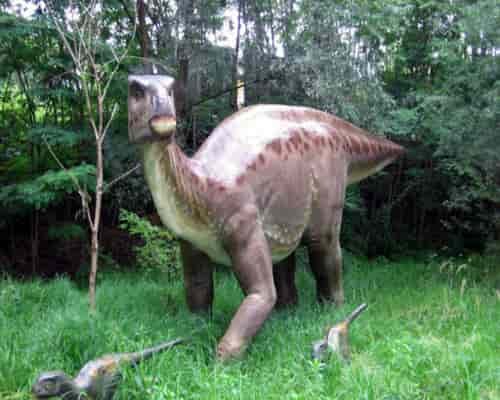
Koreaceratops
Koreaceratops is a genus of herbivorous dinosaur that lived during the Late Cretaceous period, around 120 million years ago. Koreaceratops is a genus of basal ceratopsian dinosaur found in Lower Cretaceous Albian rocks in South Korea. It was a small-sized ceratopsian dinosaur, measuring about 1.2 to 1.5 meters (4 to 5 feet) in length, it was a relatively small dinosaur compared to its giant relatives such as Triceratops in North America.
This specimen was found in a sandstone block that had been inserted into the Tando Dam in Hwaseong City. The genus name is a combination of “Korean” and κέρας (Keras) meaning ‘horn’ and ὄψις (opsis) meaning ‘face’. The type species is K. hwaseongensis, named after Hwaseong City.
Koreaceratops to be positioned as a drop in type between Archaeoceratops and ceratopsia. The newly identified genus, Koreaceratops hwaseongensis, lived about 103 million years ago during the Late Cretaceous period.
Koreaceratops had a parrot-like face with a beak in front of its jaws, indicating it was a herbivore. The claws on its hind legs suggest that it was bipedal and moved at a fairly fast pace. Koreaceratops had a unique fan-shaped tail formed by long neural spines, which suggests it was probably a good swimmer, and spent much of its time hunting for aquatic food.
One of the notable features of Koreaceratops is the presence of small, forward-curving horns above its eyes. These horns were likely used for display or defense against predators. Fossil remains of Koreaceratops have been found in South Korea, specifically in the Gyeongsang Province. The discovery of this dinosaur has contributed to our understanding of the diversity and evolution of ceratopsian dinosaurs during the Early Cretaceous period.
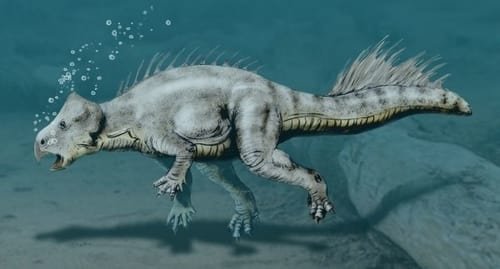
Leaellynasaura
This small bipedal dinosaur was just under 1 meter long (3.3 ft). It was first discovered in the Australian Dinosaurus Dinosaurus. Leaellynasaura lived during the early Cretaceous Period and was probably fully hairy.
Leaellynasaura is a small, herbivorous dinosaur that lived during the Early Cretaceous period, approximately 110 million years ago. It was a member of the ornithopod group of dinosaurs, which includes bipedal herbivores like Iguanodon and hadrosaurs. Leaellynasaura was discovered in Australia and is known from a few well-preserved fossils found in Victoria. It was named after the daughter of the paleontologist who first described it.
One of the unique features of Leaellynasaura is its adaptation to a cold climate. During the time it lived, Australia was located closer to the South Pole, and parts of the continent experienced long, dark winters. Leaellynasaura had adaptations to survive in these harsh conditions. It had large eyes, possibly indicating good night vision, which would have been useful during the extended periods of darkness. It also had a slender body, long legs, and specialized claws that may have helped it move efficiently in snowy or icy environments.
The size of Leaellynasaura varied depending on the age of the individual. Fully grown adults reached lengths of about 1.5 meters (5 feet) and weighed around 20 kilograms (44 pounds). It had a slender build, suggesting it was a fast and agile runner.
The discovery of Leaellynasaura has provided valuable insights into the paleoenvironment and adaptations of dinosaurs in polar regions during the Early Cretaceous. It serves as a fascinating example of how dinosaurs were able to thrive and adapt to diverse habitats across the globe.
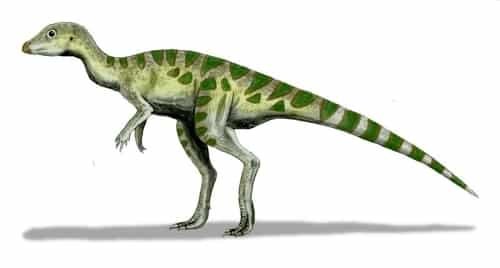
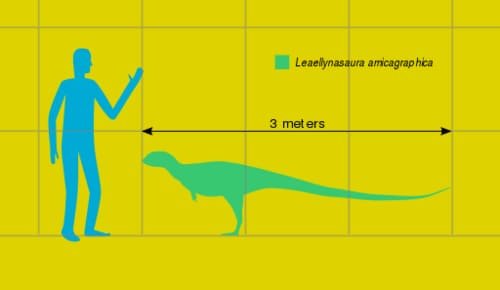
Megalosaurus
Megalosaurus is a large predatory dinosaur that lived during the Middle Jurassic period, around 166 to 168 million years ago. Megalosaurus was discovered in England, and was the first dinosaur to be named. Surgeon and geologist James Parkinson identified several fossil remains of a reptile. He named it ‘Megalosaurus’, which means ‘great lizard’ and it was given to this dinosaur due to its immense size and formidable appearance.
This was in 1824: almost twenty years before Sir Richard Owen invented the word ‘dinosaur’! Megalosaurus was about 9 meters long and weighed about 1 metric ton. It stood on two legs, and was a predator. It lived in the middle Jurassic Period.
Megalosaurus was a theropod dinosaur, belonging to the same group as famous carnivores like Tyrannosaurus rex and Velociraptor. It walked on two legs, had strong, sharp teeth, and powerful jaws, indicating that it was a formidable predator. Estimates of its size vary, but it is believed to have reached lengths of around 9 to 10 meters (30 to 33 feet) and weighed up to 2 tons.
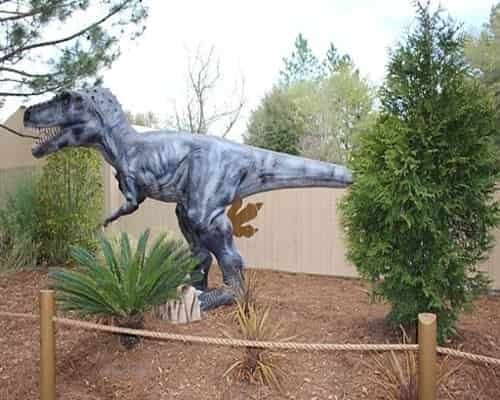
Although many details about Megalosaurus remain uncertain due to incomplete fossil records, scientists have made important discoveries about its anatomy and behavior. Fossil remains suggest that it had a large head with serrated teeth, well-developed hind limbs for swift movement, and shorter forelimbs. It is believed to have been an active hunter, preying on smaller dinosaurs and other animals.
Megalosaurus played a significant role in shaping our understanding of dinosaurs and their evolutionary history. Its discovery in the early 19th century by paleontologist William Buckland helped establish the concept of dinosaurs as a distinct group of ancient reptiles. Since then, numerous fossils and findings have shed light on the diverse range of dinosaurs that once roamed the Earth.
Today, Megalosaurus serves as an iconic representation of the fascinating world of dinosaurs and continues to captivate the imagination of people of all ages.
Minmi
Minmi is a type of small, armor-like dinosaur from the Ankylosauria family. Its body, including the lower half, is covered with bony plates. It had longer legs than most of its relatives, indicating that, despite being well armored, it could move quickly.
Minmi fossils have been found in Australia. It lived in the Early Cretaceous Age.
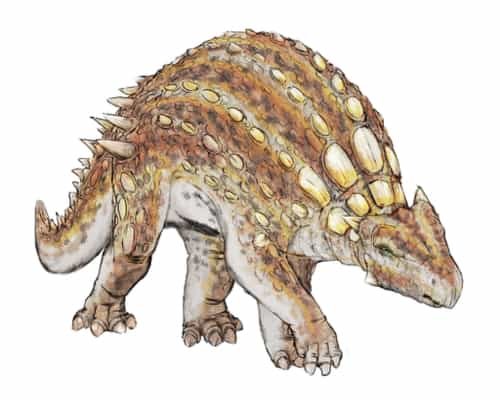
Ornithomimus
Ornithomimus is a genus of dinosaur that lived during the Late Cretaceous period, approximately 76 to 66 million years ago. Its name means “bird mimic,” indicating its resemblance to modern-day birds in terms of its overall body shape and agile movements.
Belonging to the theropod group of dinosaurs, Ornithomimus was characterized by its bipedal stance, long legs, and slender build. It had a toothless beak, similar to that of a bird, which suggests it had a diet primarily consisting of plants and small animals. The dinosaur had sharp claws on its hands and feet, indicating that it was capable of swift movements and potentially used its claws for defense or catching prey.
One of the notable features of Ornithomimus was its speed. Based on its limb proportions and overall body structure, scientists estimate that it was a fast runner, possibly reaching speeds of up to 40 to 50 miles per hour (64 to 80 kilometers per hour). This adaptation likely helped it evade predators or catch prey in its Cretaceous environment.
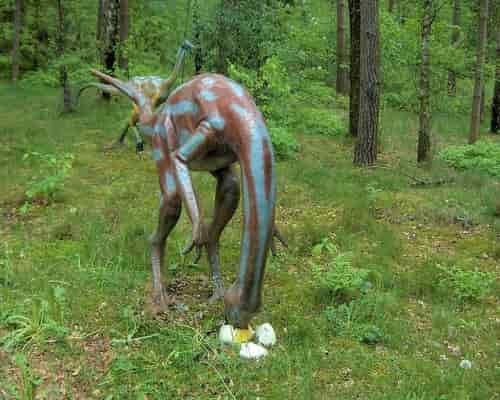
Ornithomimus was a relatively large dinosaur, although its size varied depending on the species. On average, adult Ornithomimus individuals measured around 12 to 13 feet (3.7 to 4 meters) in length. They stood at approximately 6 to 7 feet (1.8 to 2.1 meters) tall at the hip and weighed around 330 to 440 pounds (150 to 200 kilograms).
The size and proportions of Ornithomimus allowed it to be a swift and agile runner. Its long, slender legs and lightweight build were well-suited for rapid locomotion. The relatively small size of Ornithomimus compared to some other large theropod dinosaurs enabled it to move swiftly, using its speed as a defense mechanism or for chasing down prey.
It’s important to note that the size estimates for dinosaurs can vary based on the fossils available and the species being studied. New discoveries and ongoing research continue to contribute to our understanding of dinosaur sizes and proportions, refining our knowledge of these fascinating ancient creatures.
Parasaurolophus
Parasaurolophus was a large, long-necked dinosaur known for its distinctive crest on top of its head. This dinosaur lived during the Late Cretaceous period, approximately 76 to 73 million years ago. It belonged to a group of dinosaurs called hadrosaurs, also known as “duck-billed” dinosaurs.
Parasaurolophus was a Late Cretaceous herbivore. It is about 10 meters (33 ft) long and weighs 3.5 tons (7 716 pounds). Parasaurolophus had a distinctive crest growing on the back of its skull.
Tubes within this crest are connected to its nostrils. Scientists speculate that this arrangement could be used to produce sound. Parasaurolophus had a ‘tall’ but narrow tail. It may be brightly colored to attract women or as another form of display.
Parasaurolophus was an herbivorous dinosaur, feeding on a variety of vegetation such as leaves, twigs, and fruits. It likely lived in herds and inhabited the floodplain and forested regions of North America during its time.
The discovery of Parasaurolophus fossils has greatly contributed to our understanding of dinosaur diversity and evolution, offering insights into the fascinating world of the Late Cretaceous period.
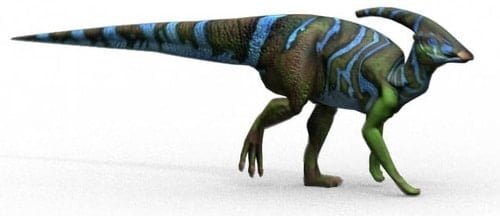
Protoceratops
Protoceratops was a sheep-sized dinosaur from the Late Cretaceous. It had a jaw shaped like a parrot’s beak, and a mouth full of teeth from eating tough vegetation. There is a frill on the back of his head. This probably served to protect the animal’s neck. In Mongolia, a protoceratops fossil was found entangled with a petrified velociraptor. Velociraptor may have been in the process of attacking the protoceratops before the two animals slipped.
Protoceratops was a small to medium-sized dinosaur that lived during the Late Cretaceous period, approximately 75 to 71 million years ago. It belonged to the ceratopsian group of dinosaurs, which are characterized by their distinctive frills and horns.
Protoceratops was about 6 to 8 feet (1.8 to 2.4 meters) long and stood around 3 to 4 feet (0.9 to 1.2 meters) tall at the shoulder. It had a compact body with a short neck and a beak-like mouth equipped with sharp teeth. One of its most recognizable features was a prominent bony frill at the back of its skull, which likely served as a display structure and possibly provided some protection.
While Protoceratops lacked the large horns seen in other ceratopsians, some individuals may have had small bumps or stubs on their frills. These variations in frill morphology suggest sexual dimorphism or individual variation within the species.
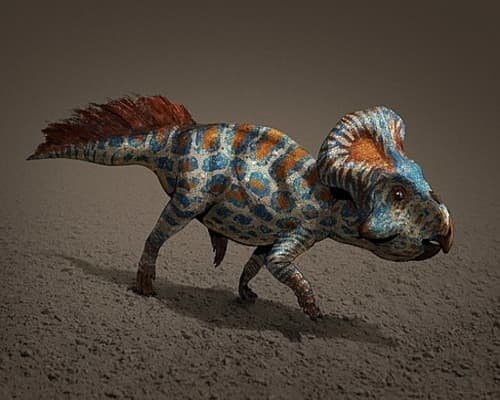
Protoceratops was an herbivorous dinosaur, feeding on a variety of plants and vegetation. It likely used its sharp beak to bite off plant material and its strong jaw muscles to chew and process food.
Fossils of Protoceratops have been found in Mongolia and China, often in association with nests and eggs, suggesting that these dinosaurs engaged in nesting and parental care behaviors. The discovery of Protoceratops fossils has provided valuable insights into the behavior, ecology, and evolution of ceratopsian dinosaurs.
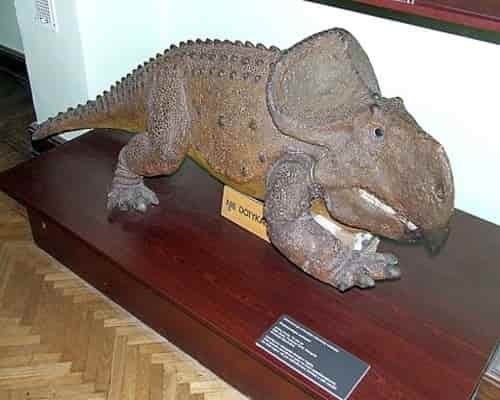
Pterodactylus
Pterodactylus was a flying reptile that lived in the Jurassic Age. It was a member of a larger group of flying reptiles called Pterosaurs. (The Late Jurassic is the third period of the Jurassic Age).
Pterodactylus is a genus of pterosaur that lived during the Late Jurassic period, approximately 150 to 148 million years ago. Despite being commonly referred to as a “pterodactyl,” Pterodactylus is actually a specific genus within the larger group of pterosaurs.
Pterodactylus had a distinct appearance with a wingspan ranging from around 1 to 2 meters (3 to 6.5 feet). It had a lightweight body, elongated wings supported by a single membrane, and a long neck. Unlike some other pterosaurs, Pterodactylus did not possess a bony crest on its head. Instead, it had a narrow beak filled with sharp teeth, which it likely used to catch and eat fish, insects, and other small prey.
The skeletal structure of Pterodactylus suggests that it was adapted for powered flight. Its wings were formed by a membrane of skin stretched between an elongated fourth finger and the body, allowing it to soar through the skies. Pterodactylus likely had a highly developed sense of sight and was capable of agile aerial maneuvers.
Fossils of Pterodactylus have been primarily found in Germany, particularly in the Solnhofen limestone deposits. These exceptionally preserved fossils have provided valuable insights into the anatomy, behavior, and lifestyle of these ancient flying reptiles. Pterodactylus is considered one of the iconic species of pterosaurs and has played a significant role in our understanding of prehistoric life during the Age of Dinosaurs.
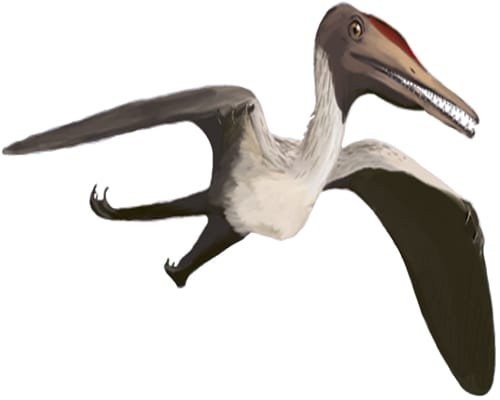
Spinosaurus
Spinosaurus is a genus of large theropod dinosaur that lived during the Cretaceous period, approximately 112 to 93.5 million years ago. It is known for its distinctive features, including a sail-like structure on its back and a long, narrow snout filled with sharp teeth.
One of the most notable characteristics of Spinosaurus is its sail, composed of elongated spines that extended vertically from its back. The purpose of this sail is still debated among scientists, with hypotheses ranging from thermoregulation to display and species recognition. Spinosaurus also had a long and robust snout, which suggests that it had adaptations for capturing and consuming fish, indicating a semi-aquatic lifestyle.
Spinosaurus is estimated to have been one of the largest theropods, reaching lengths of up to 15 meters (49 feet) or potentially even larger. It had powerful hind limbs and a large, paddle-like tail, which likely aided in swimming and provided stability both on land and in water. Its forelimbs were also well-developed and likely had a grasping function.
Fossils of Spinosaurus have primarily been found in North Africa, specifically in modern-day Morocco and Egypt. These discoveries have contributed to our understanding of the diversity and evolution of dinosaurs in different environments during the Cretaceous period.
The significance of Spinosaurus extends beyond its size and unique adaptations. It has been the subject of scientific debate and popular culture fascination, with notable appearances in movies and documentaries. Spinosaurus has helped researchers uncover more about the diverse ecosystems and the incredible diversity of dinosaurs that once roamed the Earth.
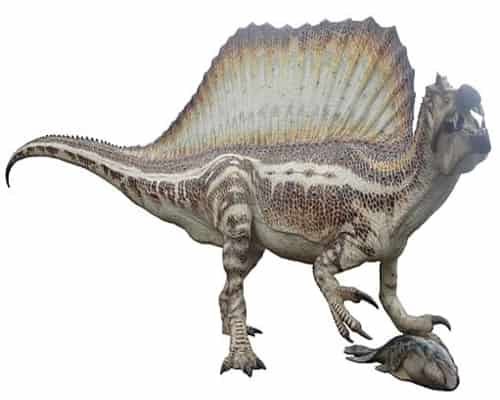
Stegoceras
Stegoceras was a bipedal herbivore that lived in the Late Cretaceous. It was about 2 meters (6,5 ft) long and probably around the height of a man. Stegoceras are Pachycephalosaurian; ‘Dome-headed dinosaur’ with a very thick skull. It may be a herd animal, and has been found in North America.
Stegoceras is a genus of small herbivorous dinosaur that lived during the Late Cretaceous period, approximately 77 to 74 million years ago. It belongs to the group of dinosaurs known as pachycephalosaurs, which are characterized by their thick skulls and dome-shaped heads.
Stegoceras was a bipedal dinosaur with a compact body and relatively long hind limbs. Its most distinctive feature was its thickened skull, which had a dome-shaped structure on the top. The dome was composed of solid bone and may have served as a form of protection during head-butting behaviors or for display purposes during mating rituals and intraspecies interactions.
The name “Stegoceras” means “roofed horn” in reference to the bony knobs and spikes found on the top of its skull. These structures were likely used in head-to-head combat between individuals or as a means of establishing dominance within its social group.
Fossils of Stegoceras have been found in North America, specifically in the western parts of the United States and Canada. These fossils have provided valuable insights into the anatomy and behavior of this unique group of dinosaurs, shedding light on their evolutionary adaptations and their role in Late Cretaceous ecosystems.
While Stegoceras may not be as well-known as some other dinosaurs, its presence in the fossil record has contributed to our understanding of the diversity and complexity of life during the Late Cretaceous period. Its distinctive skull morphology and behaviors make it a fascinating subject of study for paleontologists seeking to unravel the mysteries of ancient life.
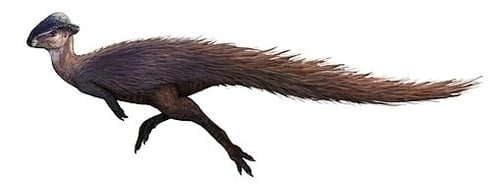
Stegosaurus
Stegosaurus was a large plant-eating dinosaur in the Stegosauridae family. It is about 9 meters long, and weighs about 2 metric tons (4 409 pounds). Despite its massive size, its brain is the size of a walnut!
Stegosaurus had rows of large bony plates along the top of its back. This may have offered protection from attack, or perhaps helped the stegosaurus to be at the right temperature. Stegosaurus was able to defend itself with a cluster of spikes on its tail.
Stegosaurus was discovered in America, and lived during the late Jurassic period.
Stegosaurus is a well-known genus of herbivorous dinosaur that lived during the Late Jurassic period, approximately 155 to 150 million years ago. It is famous for its unique appearance characterized by a row of large triangular plates running along its back and a set of sharp spikes on its tail.
Stegosaurus had a massive body with a small head and a long neck. Its most striking feature was the series of bony plates that extended vertically along its back. These plates, which varied in size and shape, were embedded in the skin and likely served a variety of purposes. While their exact function is still debated among scientists, they may have played a role in thermoregulation, display, or defense against predators.
Another distinctive feature of Stegosaurus was its tail, which ended in a set of four long and sharp spikes known as the “thagomizer.” These spikes were likely used as a defensive weapon against predators, capable of inflicting serious injuries.
Stegosaurus was a large dinosaur, reaching lengths of up to 9 meters (30 feet) and standing around 4 meters (13 feet) tall at the shoulders. It had a relatively small brain compared to its body size, leading scientists to speculate about its intelligence and behavior.
Fossils of Stegosaurus have been found in North America, particularly in the western United States. These fossils have provided valuable insights into the anatomy and lifestyle of this ancient dinosaur. It is believed that Stegosaurus was a herbivore, feeding on low-lying vegetation such as ferns and cycads.
The discovery and study of Stegosaurus fossils have contributed significantly to our understanding of dinosaur diversity and evolution during the Jurassic period. Its unique appearance and defensive adaptations make it a favorite among dinosaur enthusiasts and a popular subject of scientific research.
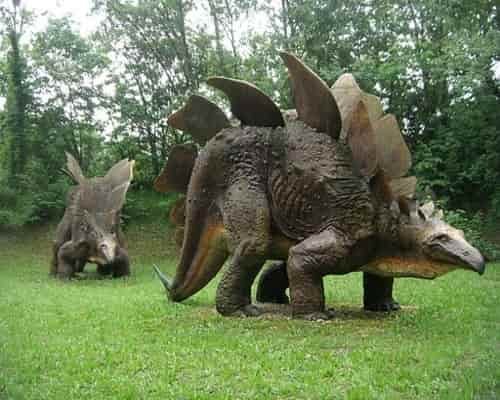
Suchomimus
Suchomimus is a member of the dinosaur family Spinosauridae and a relative of Spinosaurus. Like Spinosaurus, Suchomimus had spiny sails on its back and was long, like a crocodile. It lived in the Early Cretaceous and is found in Africa.
Suchomimus is a genus of theropod dinosaur that lived during the Early Cretaceous period, approximately 125 million years ago. Its name, which means “crocodile mimic,” refers to its crocodile-like appearance and elongated snout. Suchomimus belonged to a group of dinosaurs called spinosaurids, known for their adaptations to an aquatic or semi-aquatic lifestyle.
The most distinctive feature of Suchomimus is its long and slender snout filled with numerous sharp, cone-shaped teeth. This adaptation suggests that it primarily fed on fish and other small aquatic prey. With its elongated jaws and specialized teeth, it was well-suited for capturing and consuming slippery aquatic animals.
Suchomimus was a large dinosaur, reaching lengths of up to 11 meters (36 feet) and weighing around 4 to 5 tons. It had a long neck and a slender body, with long arms and sharp claws. Its hind limbs were well-developed and adapted for both walking on land and swimming in water.
Fossils of Suchomimus have been discovered in Niger, Africa, specifically in the Gadoufaoua region. These fossils have provided valuable information about the anatomy and lifestyle of this unique dinosaur. Suchomimus is one of the most complete spinosaurid dinosaurs known, with nearly a complete skeleton unearthed.
The discovery of Suchomimus has contributed to our understanding of the diverse range of adaptations and ecological roles within the theropod group of dinosaurs. Its crocodile-like characteristics and specialized snout make it an intriguing species for paleontologists and a fascinating creature to study.
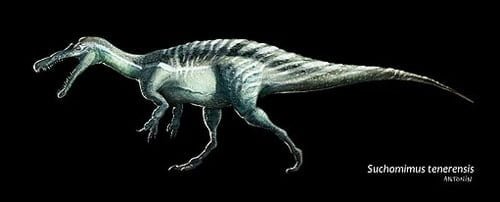
Triceratops
The appropriately named Triceratops (the name means three-horned face) lived during the late Cretaceous period. It probably lives in herds, and has been found in the western Americas. Triceratops was a plant eater with specialized teeth for cutting and slicing and a large stomach for digesting tough plant matter. The Triceratops was a large, extremely strong dinosaur, and would have been able to fight back if attacked by a flesh-eater such as a Tyrannosaurus or an Albertosaurus.
Triceratops is one of the most iconic and well-known dinosaurs that lived during the Late Cretaceous period, approximately 68 to 66 million years ago. Its name, which means “three-horned face,” perfectly describes its most recognizable feature: a large bony frill on its head adorned with three horns.
Triceratops was a large herbivorous dinosaur that walked on four legs. It had a massive body, reaching lengths of up to 9 meters (30 feet) and weighing around 6 to 12 tons. Its most striking characteristic was its skull, which could measure up to 2.5 meters (8 feet) in length. On the skull, Triceratops had a prominent brow horn above each eye and a larger horn on its snout, giving it a formidable appearance.
The purpose of Triceratops’ horns is still a subject of scientific debate. It is believed that they might have been used for defense against predators or in combat with rival Triceratops individuals during mating or territorial disputes. The large frill on the back of its head served as a protective shield and attachment point for powerful jaw muscles.
Triceratops was a herbivore and had a beak-like mouth with rows of sharp teeth at the back for grinding plant material. It likely fed on low-lying vegetation, such as ferns, cycads, and other plants that were abundant during its time.
Fossils of Triceratops have been found in North America, primarily in the western United States and Canada. These fossils have provided scientists with valuable insights into the anatomy, behavior, and evolution of this dinosaur.
Triceratops is often depicted in popular culture, and its distinctive appearance has made it a favorite among dinosaur enthusiasts of all ages. Its impressive size, unique skull ornamentation, and herbivorous lifestyle make it a fascinating subject of study and an iconic symbol of the prehistoric world.
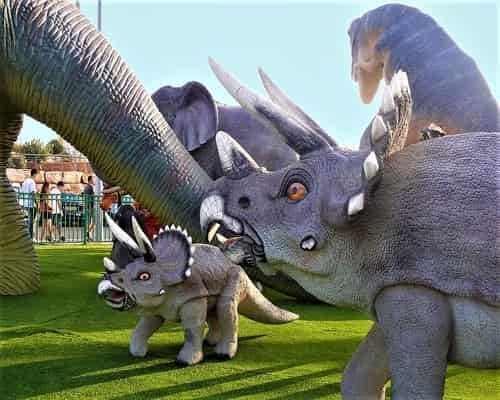
Troodon
Troodon is a genus of small to medium-sized theropod dinosaurs that lived during the Late Cretaceous period, approximately 76 to 66 million years ago. The name “Troodon” means “wounding tooth,” referring to its sharp teeth.
Troodon was a bipedal dinosaur, meaning it walked on two legs. It had a slender body, long legs, and a long, thin tail for balance. Its size varied among species, with some individuals reaching lengths of around 2 to 3 meters (6.5 to 10 feet) and weighing approximately 50 to 100 kilograms (110 to 220 pounds).
One of the distinguishing features of Troodon was its relatively large brain compared to other dinosaurs of its time. It is considered one of the most intelligent dinosaurs known, with brain-to-body size ratios similar to those of modern-day birds. This suggests that Troodon may have had advanced sensory capabilities and cognitive abilities.
Troodon had a slender, pointed snout and sharp, serrated teeth adapted for slicing through flesh. It likely had excellent vision and was a nocturnal hunter, relying on its keen senses to locate prey in low-light conditions. It is believed to have been an opportunistic predator, feeding on small animals like insects, lizards, mammals, and possibly even other small dinosaurs.
Fossils of Troodon have been discovered in North America, particularly in the western United States and Canada. These fossils have provided valuable information about the anatomy, behavior, and evolutionary relationships of this dinosaur.
Despite its relatively small size, Troodon’s intelligence and hunting abilities make it a fascinating dinosaur to study. Its existence during the Late Cretaceous period contributes to our understanding of the diverse ecosystems and coexistence of different dinosaur species during that time.
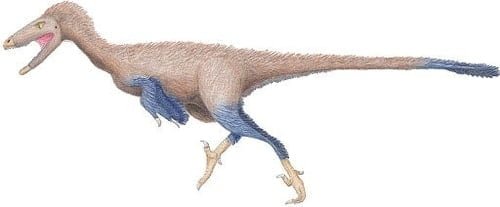
Gambar ilustrasi dinosaurus troodon: Source: IJReid / Wikimedia
Tyrannosaurus rex (T-rex)
The Tyrannosaurus is perhaps the most famous type of dinosaur in the world, and no list of dinosaurs would be without it. One species in particular, the Tyrannosaurus Rex, is well-known as the typical ‘dinosaur killer’. The name “Tyrannosaurus rex” means “tyrant lizard king,” reflecting its massive size and powerful presence.
Tyrannosaurus was one of the largest land meat eaters of all time. Not only strong; it’s also smart, fast and equipped with amazing senses of sight and smell.
One of the characteristics of Tyrannosaurus is its very large skull. It will be able to support strong jaw muscles; its fearsome teeth will have the bite force to match.
Tyrannosaurus grew to about 12 meters in length, and weighed up to 8 metric tons (9 short tons). Tyrannosaurus lived until the end of the Cretaceous. It became extinct along with all other non-bird dinosaurs with the Cretaceous-Paleogene Extinction Event.
T-rex had short, powerful arms with two-fingered hands, which were believed to have been used for grasping and holding onto prey. Despite their relatively small size compared to the rest of its body, these arms were still strong and functional.
It is believed that T-rex was an apex predator, meaning it occupied the top of the food chain in its ecosystem. Its diet mainly consisted of other dinosaurs and large herbivorous animals, such as Triceratops and Edmontosaurus. T-rex likely used its keen senses, including its excellent eyesight and sense of smell, to locate and track its prey.
Fossils of T-rex have been discovered in North America, primarily in the western United States and Canada. These fossils have provided valuable insights into the anatomy, behavior, and lifestyle of this remarkable dinosaur. T-rex continues to capture the imagination of people of all ages and remains a symbol of the incredible diversity and power of the prehistoric world.
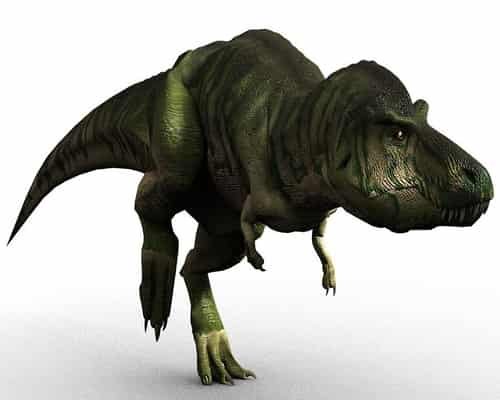
Utahraptor
Utahraptor (meaning “Utah predator” or “Utah thief”) is a genus of theropod dinosaur. It contains a single species, Utahraptor ostrommaysorum, which is the largest known member of the family Dromaeosauridae. Fossil specimens date to the upper Barremian stage of the early Cretaceous period (in rock strata dated to 126 ± 2.5 million years ago).
The holotype specimen of Utahraptor is fragmentary, consisting of fragments of the skull, tibia, claws and several caudal (tail) vertebrae. Some of these elements suggest an animal about twice the length of Deinonychus.
Like other dromaeosaurids, Utahraptor had large curved claws on their second toes. One claw specimen was preserved at 22 cm in length and estimated at 24 cm was restored.
The largest specimen of U. ostrommaysorum is estimated to have been up to 5.7 meters long and weighed less than 500 kilograms, comparable in size to a polar bear. However, Kirkland’s 2001 findings suggest the species may be much heavier than previously thought.
Utahraptor is a large, predatory dinosaur that lived during the Early Cretaceous period, around 125 million years ago. It belongs to the group of dinosaurs known as dromaeosaurids, which were characterized by their sharp claws and bird-like features.
Utahraptor was one of the largest raptors ever discovered, measuring about 20 feet (6 meters) in length and standing around 6 feet (1.8 meters) tall at the hip. It had a slender, lightweight body with long, powerful hind legs that allowed it to move swiftly and efficiently.
One of the most distinctive features of Utahraptor was its sickle-shaped retractable claw on each foot. These claws could grow up to 9 inches (23 centimeters) long and were incredibly sharp. It is believed that Utahraptor used its claws to slash and grip its prey, inflicting deep wounds and disabling its victims.
In addition to its lethal claws, Utahraptor had a long, stiff tail that provided balance and stability while running and hunting. Its head was equipped with a mouthful of sharp, serrated teeth, which it used to bite and tear through flesh.
Based on its skeletal structure, scientists believe that Utahraptor was a fast and agile predator, capable of chasing down and capturing prey. It likely hunted in packs, working together to take down larger herbivorous dinosaurs. Its diet probably consisted of smaller dinosaurs and other animals of its time.
Utahraptor fossils have been discovered in North America, specifically in the state of Utah, which is where it gets its name. These fossils have provided valuable insights into the behavior and anatomy of this remarkable dinosaur, although much of its biology and behavior remains speculative due to limited fossil evidence.
Utahraptor is often depicted in popular culture as a fierce and intelligent dinosaur, known for its hunting prowess. Its discovery has contributed to our understanding of the diversity and complexity of the dinosaur kingdom, highlighting the remarkable adaptations that evolved during the Mesozoic Era.

Velociraptor
Velociraptor was a type of small, bird-like, predatory dinosaur of the Late Cretaceous. His name means ‘swift harrier’ and adequately describes the fast and furious nature of this carnivore.
Velociraptor was armed with a mouth full of sharp teeth, and sharp claws on its hands. The most famous weapon, however, is the large, single curved claw found on each foot. These could have been used for cutting and tearing, and also for catching and holding velociraptor prey.
In many films, the Velociraptor is depicted as taller than the male. In real life, however, it would be waist high. It may as well have been fully feathered.
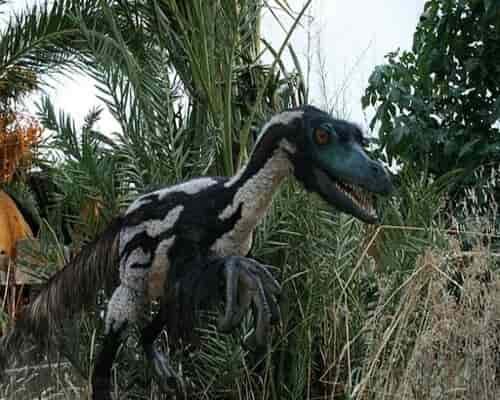
Velociraptor is a well-known dinosaur that lived during the Late Cretaceous period, approximately 75 to 71 million years ago. It belongs to the group of dinosaurs known as dromaeosaurids, which were characterized by their bird-like features and sharp, curved claws.
Velociraptor was a relatively small dinosaur, measuring about 6 feet (2 meters) in length and standing around 3 feet (1 meter) tall at the hip. It had a sleek and lightweight body, with long hind legs that allowed it to run swiftly. Its forelimbs were equipped with sharp, curved claws, most notably the infamous sickle-shaped claw on the second toe.
One of the distinctive features of Velociraptor was its highly developed intelligence and predatory capabilities. It is believed to have been an agile and fast hunter, capable of chasing down its prey and delivering quick, precise strikes with its sharp claws. Velociraptor likely hunted in packs, cooperating to take down larger prey.
Contrary to some popular depictions, Velociraptor was covered in feathers, much like its close relatives and modern-day birds. These feathers would have provided insulation and possibly played a role in courtship displays or communication.
Velociraptor’s diet mainly consisted of small and medium-sized animals, such as other dinosaurs, small mammals, and reptiles. Its sharp teeth and powerful jaws allowed it to deliver lethal bites, enabling it to tear through flesh and devour its prey.
Fossils of Velociraptor have been primarily found in Mongolia and China, with the most famous specimen discovered in the Gobi Desert. These fossils have provided valuable insights into the anatomy, behavior, and social structure of this remarkable dinosaur.
Velociraptor gained significant recognition and popularity due to its portrayal in movies and popular culture, often depicted as a cunning and formidable predator. Its depiction in the film “Jurassic Park” helped cement its status as one of the most iconic dinosaurs known to the general public.
Wuerhosaurus
Is a genus of stegosaurid dinosaur from Early Cretaceous China and Mongolia. As such, it is one of the last genera of stegosaurs known to exist, as most of the others lived in the late Jurassic.
Wuerhosaurus homheni was probably a large animal. Gregory S. Paul (American freelance researcher, writer and illustrator working in the field of paleontology) in 2016 estimated the length at 7 m and weight at 4 tons. Only a few scattered bones have been found, making full recovery difficult.
Wuerhosaurus was a dinosaur that lived during the Early Cretaceous period, approximately 130 to 125 million years ago. It belonged to a group of dinosaurs called stegosaurs, which were known for their large, bony plates and spiked tails.
Wuerhosaurus was a relatively large dinosaur, measuring around 26 to 30 feet (8 to 9 meters) in length. Its body was low and robust, supported by four sturdy legs. Like other stegosaurs, Wuerhosaurus had a small head with a beak-like snout and rows of sharp teeth for chewing plant matter.
One of the distinguishing features of Wuerhosaurus were the prominent plates that ran along its back. These plates were bony structures embedded in the skin and may have served multiple functions, including display, thermoregulation, or defense against predators. The arrangement and size of these plates varied among individuals and species.
Wuerhosaurus also possessed a long, spiked tail known as a “thagomizer.” This tail was armed with four pairs of large spikes, which could have been used as defensive weapons against predators or as a display to attract mates.
As a herbivorous dinosaur, Wuerhosaurus primarily fed on plants, such as ferns, cycads, and other vegetation that was abundant during the Early Cretaceous period. Its broad and flat teeth were well-suited for grinding plant material.
Fossils of Wuerhosaurus have been found in what is now modern-day China. These fossils have provided valuable insights into the anatomy and lifestyle of this unique stegosaur.
While the exact weight of Wuerhosaurus is difficult to determine due to incomplete fossil evidence, it is estimated to have weighed several tons, making it a large and imposing herbivorous dinosaur of its time.
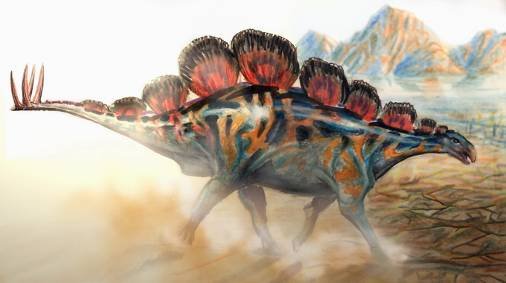
Xiongguanlong
This is a genus of tyrannosauroid dinosaur that lived in the Early Cretaceous of what is now China. Its type species is X. Baimoensis, which was described online in 2009 by a group of researchers from China and the United States, and officially published in January 2010.
The genus name refers to the city of Jiayuguan, a city in northwestern China. The specific name comes from bai mo, “white ghost”, after “white ghost fortress”, a rock formation near a fossil site. Fossils include the skull, vertebrae, right ilium and right femur. The rocks found in are from the Aptian to Albian Cretaceous stages, between 125 and 100 million years ago.
The Xiongguanlong were bipedal animals that balanced their bodies on a long tail, like most other theropods. It was intermediate in size between the earlier tyrannosauroids of the Barremian and later tyrannosaurids of the Late Cretaceous, such as Tyrannosaurus, and has been estimated to weigh around 300 kilograms. The basal vertebrae were stronger than in other tyrannosauroids, possibly to better support the massive skull. The skull has a long snout resembling Alioramus.
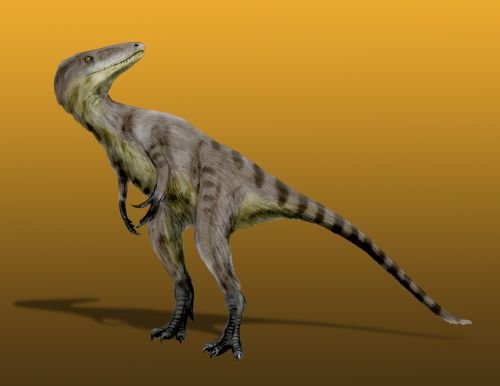
Zuniceratops
Zuniceratops (‘horned face Zuni’) was a ceratopsian dinosaur from the mid-Turonian Late Cretaceous of what is now New Mexico, United States. It lived about 10 million years earlier than the better known Ceratopsidae and provides an important window into their ancestry.
Zuniceratops appears to have been about 3 to 3.5 meters long and 1 meter high (at the hip). It probably weighed 100-150 kilograms, making it much smaller than most Ceratopsids. The skull has a pair of well-developed brow horns, similar to those of primitive chasmosaurs and centrosaurs, but the nasal horns are absent. The brow horns are thought to grow much larger with age. The snout is long and low, like that of a chasmosaurin.
The veil is a thin, wide, shield-like structure. It has a pair of large cavities but lacks epoccipital bone, as in Protoceratops. Overall, the anatomy is much more primitive than in ceratopsids, but more advanced than in protoceratopsids.
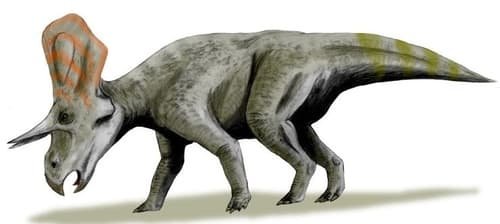
List of Dinosaurs – Types of Dinosaurswith Names with Pictures: Conclusion
We hope you have enjoyed this list of dinosaurs and its types. We wanted to include not only the most famous dinosaurs, but also some of the lesser known species, just to test the dinosaur experts out there! What do you think?
Sources: PinterPandai: Australian Museum, Active Wild, Live Science, Natural History Museum), Khan Academy
Photo credit (main picture): Ryanz720, Public domain, via Wikimedia Commons
Exploring the Historical Time Periods: From Mesozoic Era, Paleolithic to Modern Times
